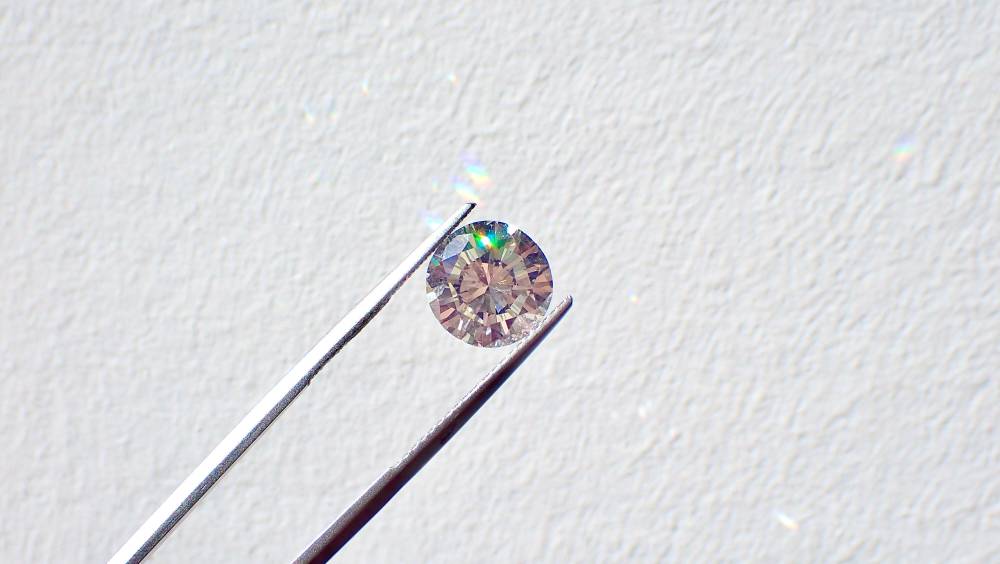Lab-grown diamonds are a girl’s new best friend

Diamonds have long dazzled the world but their brilliance casts a shadow. On one hand, they’ve adorned engagement rings, heirloom jewelry, and red-carpet moments. But the other facet of this brilliant gem tells a darker story: of blood-soaked origins tied to war, of being traded for dirty money, and of exploitative mining practices, child labor, and more.
This dual nature has made diamonds the subject of fascination and scrutiny for centuries. Out of all the gemstones in the world, how did the diamond stand out from the rest?
And in a world that’s becoming more conscious of ethics and sustainability, why is there still a demand for it?
It all boils down to marketing. In 1947, De Beers, who at the time controlled the vast majority of the world’s rough diamond supply, launched the now-iconic “A diamond is forever” campaign. It was not just an ad; it became tradition. And suddenly, proposing with a diamond ring was not just romantic—it was expected.
The underlying message was this: Your love is permanent? Then prove it with a stone that’s hard to break.
This message of “forever,” however, goes beyond love and wedding rings. It’s why for so long natural diamonds have been in high demand. People saw them as investments—failsafes in times of economic turmoil and uncertain futures—even as legacies to be passed down to the next generation, or status symbols to be flaunted at the next big party.
But now, a new player has entered: lab-grown diamonds.
What are lab-grown diamonds?
Everything about blood diamonds, unethical mining, and shady supply chains… all that applies to natural diamonds. The kind that’s grown deep in the earth and mined. But thanks to advancement of technology, scientists can now grow diamonds in a lab.
Lab-grown diamonds are grown via two methods: HPHT (high pressure, high temperature) or CVD (chemical vapor deposition). The first mimics the way natural diamonds grow—in temperatures averaging 900 to 1,300°C and pressures of at least 45 kilobars, which would cause carbon to crystallize into a diamond, just as it would deep within the earth.

CVD, on the other hand, begins with a small diamond seed placed inside a sealed vacuum chamber. A carbon-rich gas is introduced, and under high heat (typically around 800 to 1,000°C), the gas breaks down, allowing carbon atoms to deposit onto the seed and gradually grow into a diamond, layer by layer.
That said, a lab-grown diamond is still a diamond—it’s just grown differently. And in a controlled environment, too. Regardless of which process is used, factors like the 4Cs (cut, color, clarity, and carat) can be precisely controlled in lab-grown diamonds.
Natural or lab-grown? That is the question
As a GIA Graduate Gemologist, I’m often asked about my take on natural and lab-grown diamonds. And as someone who wants to stay objective, I’d much prefer to list the pros and cons of each—backed, of course, by what I’ve learned (the industry is, after all, evolving).
Here’s what I think about lab-grown diamonds and why they’ve become a popular choice.
Visually and chemically identical
Contrary to what most may think, a lab-grown diamond is still a diamond. But what makes up a diamond? Carbon. The other elements, which make up a very small percentage, only serve to add color to the stone. Nitrogen, for example, colors diamonds yellow. Blue diamonds are caused by boron. And distortions in the diamond’s crystal lattice (or structure) can result in brown or possibly, even pink diamonds.
And looking back, lab-grown diamonds use the same carbon when grown. So while their origin differs, their composition—and sparkle—remains the same.
Ethical and conflict-free
Natural diamonds have been the source of many conflicts—fueling political instability, territorial disputes over ownership of diamond-rich regions, and the abuse of human rights by virtue of child labor, forced labor, and unsafe working conditions.
Lab-grown diamonds, on the other hand, are grown without the ethical concerns, let alone the geopolitical conflict tied to mining. Since all the work is done in the lab, child labor and poor working conditions can easily be taken out of the equation.
Lower impact on the environment
Mining takes a lot of work and resources. Hundreds of tons of earth are shifted around for just a few carats, carbon emissions run high from the use of heavy machinery and fossil fuels (and sometimes, even explosives), and a lot of water is used up.
And this isn’t even all of it. At the end of it all, there’s the aftermath of deforestation and the destruction of the ecosystem.
While lab-grown diamonds do use energy, its environmental repercussions are not as massive, given that no land is disturbed during production. What’s more, some labs have started using renewable power to reduce their carbon footprint.
More room for quality control
Growing a diamond gives you—or at least the scientists growing it—more control over its quality. Natural diamonds, after all, are a hit and miss: sometimes, you get “clean” ones, other times, you get stones riddled with inclusions (not flaws, but natural imperfections that can affect clarity and brilliance). This is why the Gemological Institute of America (GIA) recently released a new grading system for lab-grown diamonds that sets it apart from the 4Cs, a criteria used for natural diamonds.
In the earlier days, there were clear indicators that showed that a diamond was lab-grown: HPHT diamonds had certain unnatural marks and growth patterns that a natural diamond would never have, while CVD stones occasionally revealed the outline of their seed crystal.
But technology has advanced. Today, it’s nearly impossible to tell the difference between a natural and lab-grown diamond with the naked eye. Yes, even gemologists need tools to tell the two apart. And as innovation continues, lab-grown diamonds could soon be engineered to near perfection—potentially flawless, too.
A cost-effective alternative
When a lab-grown diamond is compared with a natural diamond (assuming all 4Cs are the same for consistency), a lab-grown diamond is significantly more affordable, often around 30 to 50 percent less.
Given the current economy, that price difference matters more than ever. It’s why many people prefer lab-grown diamonds—it’s a luxury item without the premium price tag.
But don’t disregard natural diamonds that easily
Even though lab-grown diamonds are now in, that doesn’t mean natural diamonds have lost their sparkle. After all, if we’re talking numbers, lab-grown diamonds will soon become more plentiful the better scientists get at growing or making it.
But natural diamonds? They take millions of years to form beneath the earth’s surface. That kind of scarcity and rarity (that the diamond grades well in the 4Cs) can make natural diamonds even more special. And beyond value and investment purposes, there’s also the sentimental value that a diamond holds.

















